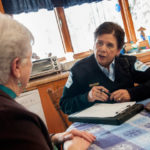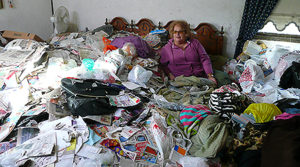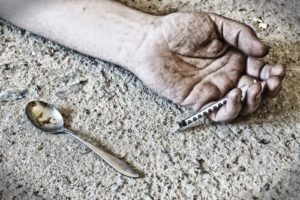By: Robert Avsec, Executive Fire Officer
A while back, I read the following statement (which I’m paraphrasing):
“We continue to train Marines as warfighters, yet we expect them to function as social workers.”
When I first read that (sorry that I can’t remember exactly where) I was amazed at the clarity of the statement. In

Community paramedicine is a growing endeavor for fire and EMS departments looking to reduce the number of emergency responses to non-emergent situations.
both Afghanistan and Iraq, Marines have been deployed for combat operations for sure. But equally important has been the effort to the Corps—and other branches of the U.S. military services—to engage the local populations in roles that are more akin to those of a diplomat than that of a combatant.
In addition, just think of the places that U.S. Marines have been deployed over the past decade or so in non-combat missions such as disaster relief for areas around the world devastated by hurricanes, earthquakes, tsunamis, etc.
Firefighters are much like Marines
Just like Marines, today’s firefighters receive a wide variety of training to prepare them for a multitude of “combat” situations. Fire suppression, EMS, hazardous materials response, technical rescue are the main focal points for the training that most departments provide for their personnel.
But what about those “non-combatant” roles that firefighters find themselves in daily? Situations like:

Compulsive Hoarding Syndrome victim at home.
- Neglected and/or abused adults and children
- “Hoarders”
- Elderly residents in crisis with no one to turn to for help
- Citizens who become extremely vocal or even combative because they feel they’re not getting the respect or service that they expect
- Repeat victims of drug overdoses
I could go on, but I trust you get my “drift.” What kinds of training is your department providing to its personnel to prepare them with the knowledge, skills, and abilities to manage these types of situations safely, effectively and efficiently? And with empathy and compassion.
See Related: More Customer Service Skills for Firefighters–The Wrap-Up
Firefighters as Social Workers
The International Federation of Social Workers provides a Global Definition of the Social Work Profession:
Social work is a practice-based profession and an academic discipline that promotes social change and development, social cohesion, and the empowerment and liberation of people. Principles of social justice, human rights, collective responsibility and respect for diversities are central to social work. Underpinned by theories of social work, social sciences, humanities and indigenous knowledge, social work engages people and structures to address life challenges and enhance wellbeing.
Kind of sounds like what many of our communities need and expect from firefighters, no? I’m not necessarily saying

Fire and EMS departments are increasingly responding to a new generation of drug overdoes, many including “repeat ODs.”
that it’s right or wrong, but it is a reality that firefighters and officers and medics face on our streets daily. So perhaps another saying is applicable here: If you can’t beat ‘em, join ‘em.
Recruiting for Future Success
You’re probably familiar with another adage, this one from motivational speaker and leadership consultant, John Maxwell:
What got you here, won’t get you there.
Training and education of your people after they’ve joined your fire and EMS organization is just one piece of the puzzle. Fire departments looking to improve their ability to serve their citizens in such a wide variety of “non-combat” situations are going to have to “ratchet up” their recruiting efforts to find future employees or members like:
- More women and minorities as these groups tend to have higher capacities for empathy and compassion. Why is that? It’s just my opinion, but members of these groups likely have a life history of stresses and struggles and being in the minority in most situations that enable them to see and feel things from another person’s point of reference.
- Men and women who have good interpersonal and communication skills that they’ve gained from a variety of life and work experiences. Maybe the best person for the job isn’t necessarily someone who’s young and hasn’t acquired “bad habits” (The prototypical new firefighter that we can train the way we want). Maybe the best person might be the one who’s obtained a well-rounded “education” from the “school of hard knocks.”
- Men and women who’ve pursued higher education in fields like psychology, sociology, social work and related fields. Firefighters will always need to have the strong technical skills in fire suppression, providing medical care, and responding to a host of other emergency situations. But isn’t it time that we also start bringing more people into our profession who have more of the “non-combatant” skills and train them for the “combatant skills”?
 Fire & EMS Leader Pro The job of old firefighters is to teach young firefighters how to become old firefighters!
Fire & EMS Leader Pro The job of old firefighters is to teach young firefighters how to become old firefighters!